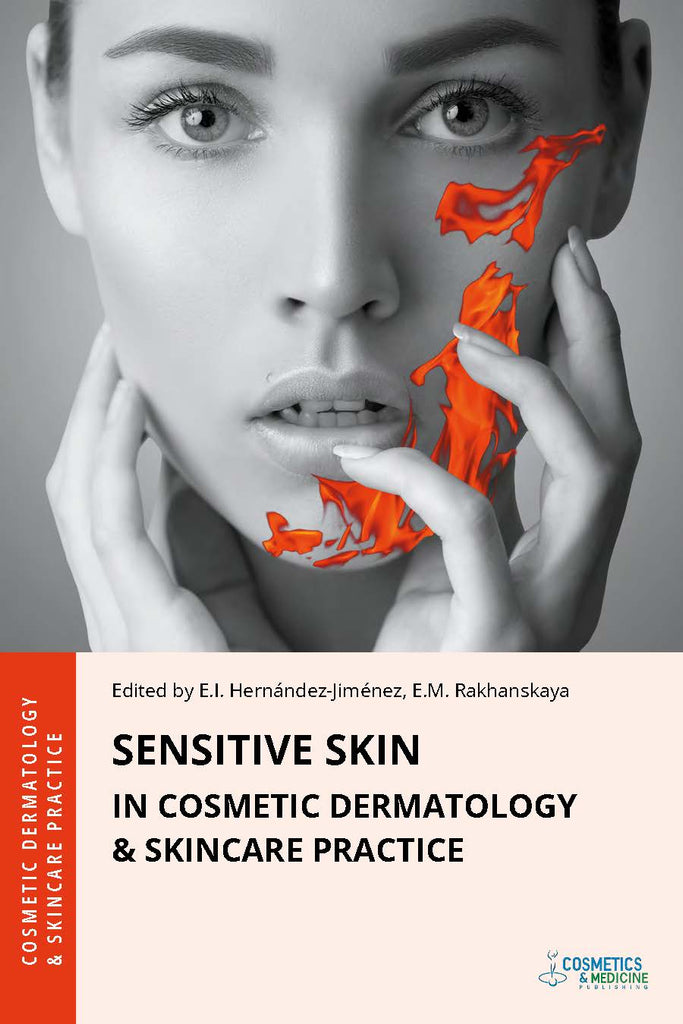- Publisher: Cosmetics & Medicine Publishing
- Format: eBook
- Pages: 156
- Language: English, Russian
- Publication date: January 8, 2024
- Product dimensions (WxHxD), cm: 15.24 x 22.86 x 0.9
- ISBN/ISSN: 978-1-970196-23-8 (paperback); 978-1-970196-45-0 (hardcover); 978-1-970196-06-1 (eBook – Adobe PDF); 978-1-970196-15-3 (eBook – ePUB)
Patients with sensitive skin often pose a problem for skincare specialists. First, as their complaints are often subjective — burning, itching, tightness, and tingling, which cannot be seen with the naked eye — it is not always clear what to work with and how to diagnose and evaluate the therapy outcomes. Second, for many people, skin hypersensitivity is typically initiated by cosmetics, which is the main skincare tool, so skincare practitioners may avoid such clients who likely expect cosmetics used in treatment to only make things worse.
Yet, this is not the case, as the right cosmetic care and treatment can take away the unpleasant symptoms, thereby contributing to a significant improvement in the quality of life for people with sensitive skin.
This book was created to help dermatologists and other skincare professionals better understand this syndrome, allowing them to tailor their correction protocols to each case.
For this purpose, we have gathered as much up-to-date information as possible, given that research in recent years has helped to make significant advances in our understanding of this condition. Why do not all patients with sensitive skin have problems with the skin barrier, even though it was previously considered a "must"? Why is hypersensitivity present even though a reduction in nerve endings is found in many patients? Does the microbiome influence the development of sensitivity symptoms, and what are the dangers of psychological stress? You will find the answers to these and other questions in our new book. This is important knowledge and new nuances presented within these pages will help you build a truly effective therapy.
The main part of the book is devoted to building an effective care strategy for sensitive skin. For this purpose, all complex treatment approaches are considered, from limiting triggers, protection, and cleansing, which are very specific to this condition, to modern therapeutic modalities that affect each of the mechanisms of sensitive skin pathogenesis. As all of them have their own nuances, these will also be discussed in detail.
In addition, the peculiarities of diagnosing this condition and how to distinguish it from other skin pathologies — atopic, allergic, contact dermatitis, and rosacea — are provided. Separate sections are devoted to the problems of skin sensitivity with age-related changes, the possibilities of correcting the symptoms of sensitive scalp, as well as psychological help to patients which can be provided by a skincare specialist. These issues are rarely talked about, but addressing them greatly improves the condition of patients with sensitive skin syndrome.
Given the wealth of information presented in this book, it will be useful to dermatologists and skincare specialists working with individuals experiencing sensitive skin problems, as well as all interested parties. Of course, it will also help people with sensitive skin to evaluate advertising claims in a balanced way and to base their skincare on reliable information.








